Relution lending system
Why are lending devices needed in schools?
In connection with the school closures during the Corona crisis, the federal government is providing additional funds to ensure that all pupils can participate in digital education, including homeschooling. For this purpose, school authorities, school boards and schools receive financial subsidies to procure school-owned mobile devices and hand them out to the pupils either permanently or temporarily.
What factors are crucial for a successful lending system?
The responsible persons in school authorities and schools are obliged to ensure that the use of the lent devices by the pupils complies with data protection and the protection of minors, irrespective of the operating system.
In order for students to be able to work with lent devices, they must be prepared and equipped via an MDM system in terms of security and work tools such as relevant content and apps. Administration and remote management during the lending period must also be guaranteed.
This guarantees that the devices comply with the current security standards at all times and that settings can be changed independently of time and place and devices can be locked or reset in an emergency.
Storing terms of use for the lent device as well as keeping track of and documenting information such as the date of the lent device, the return date and the person borrowing the equipment as well as monitoring the condition of the equipment during the lending are key success factors for a smooth and secure lending process.
How can a lending process be mapped in Relution?
1. Terms of use
In order to be able to lend equipment to students, the terms of use must first be clarified. This includes, for example, questions such as general conditions, the regulation of handing over and returning lent devices, liability in the event of damage or loss, as well as the initial setup and configuration of the devices to comply with data and youth protection regulations.
This information can be stored in Relution under “Settings” -> “Loan System” and formatted with Markdown for better clarity. Different terms of use can be stored.
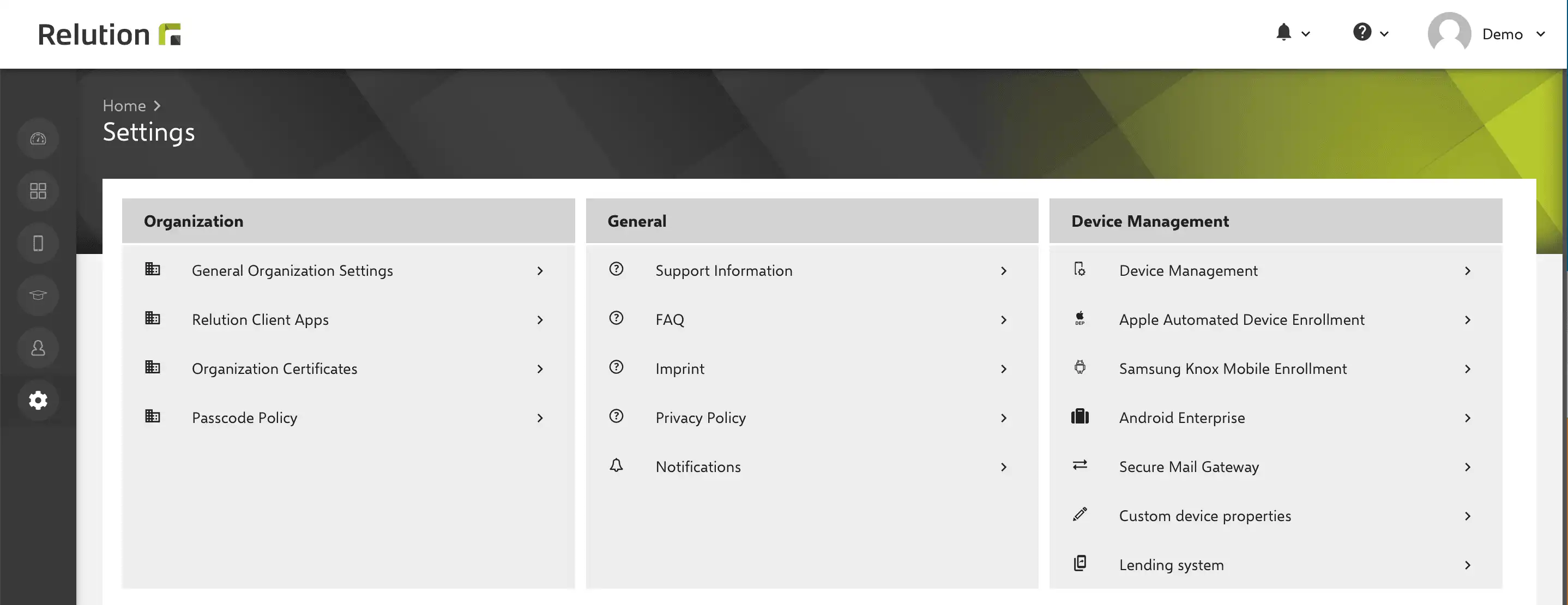
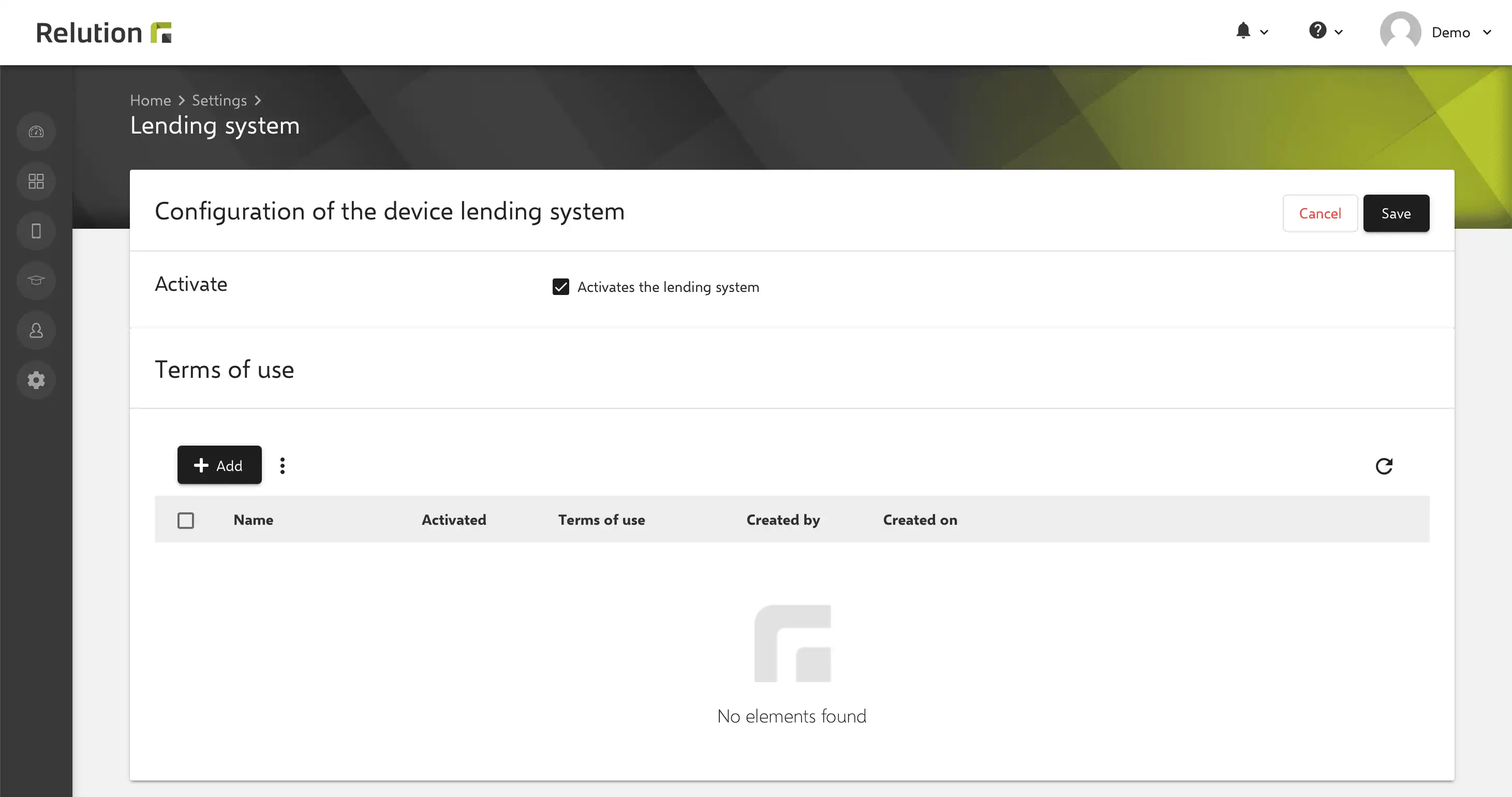
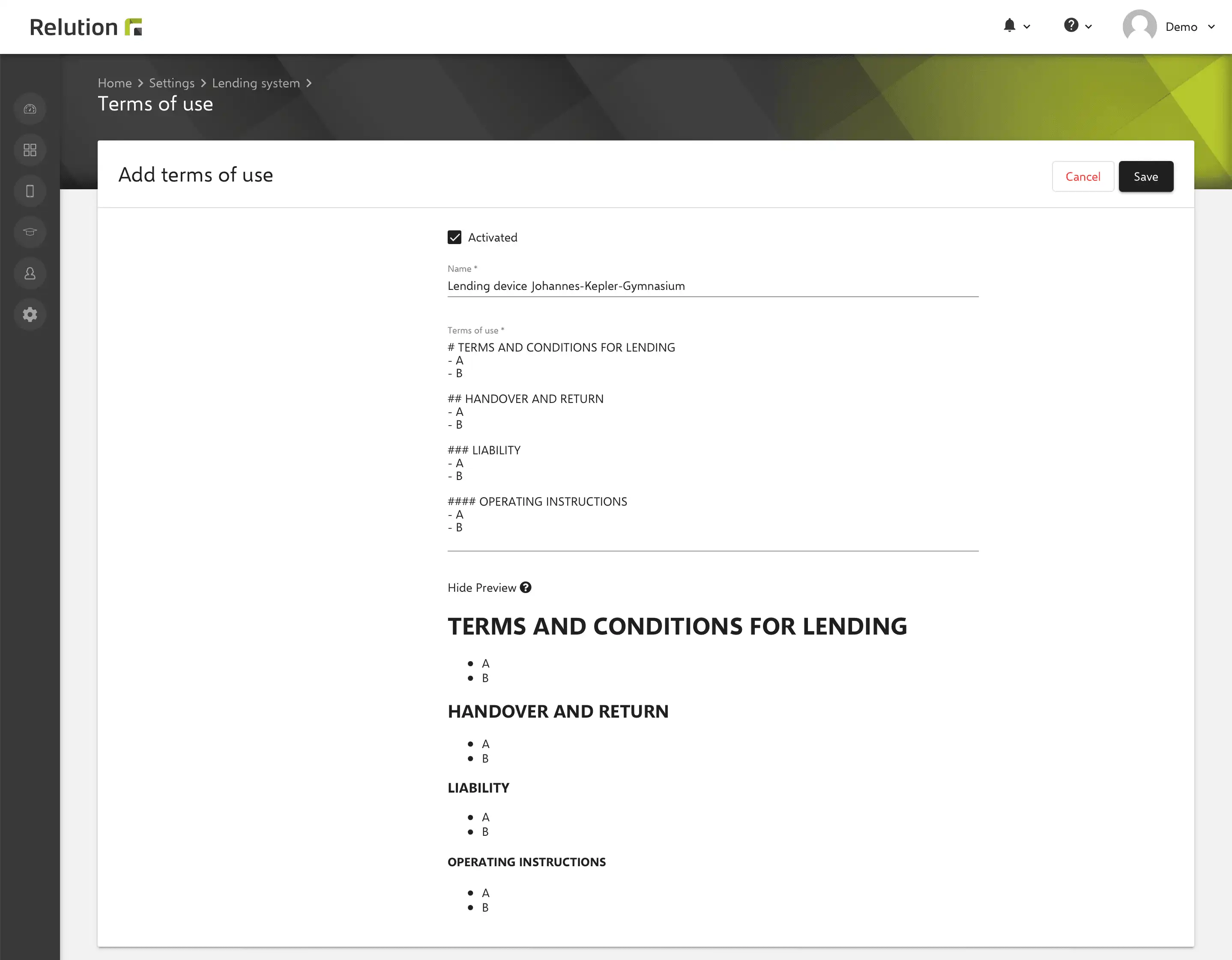

The terms of use documented in this way are available in Relution in the further lending process and can be selected for each lent device.
This means that the agreed basis on which the lending was made to the respective pupil can be traced at any time. As a rule, the school also concludes a physical lending contract with the student.
2. Lending of equipment
In order to systematically map the lending process in Relution, devices can be lent in the inventory. The lending process can be started in the device details via the shortcut “Lend device” in the info box or under the tab “Lend” and the button “Lend”.

In the subsequent dialogue, the lending period is defined via the mandatory fields “Loaned from” and “Loan until”. The device is assigned to a pupil or teacher. The name of the borrower is entered in the free text field “Borrowed to”. A suggestion function can be used to select names that have already been entered as well as existing Relution users.
Note: Borrowers entered under “Borrowed from” differ from the Relution user who is actually assigned to the device in the system. Relution users do not necessarily have to exist in order to use the lending system, and it is not necessary to log on to the lending equipment with a password. If, on the other hand, lent devices with user-specific apps and content are to be handed out, it is necessary to create corresponding users in Relution for the borrowers (“Loan to”) and assign them to the respective devices in the device details. Apps can then be individually distributed to the devices via auto-deployments.
Comments can be entered in the free text field “Remarks”. For example, it can be specified for which purpose or which measure the device is lent. If the device is lent with accessories such as a power supply unit, a case or a pen, this can also be documented here and the complete return of the lent utensils can be checked when the device is returned.
Furthermore, stored terms of use can be selected and a signature uploaded. A copy of any physical lending contract can also be uploaded here.
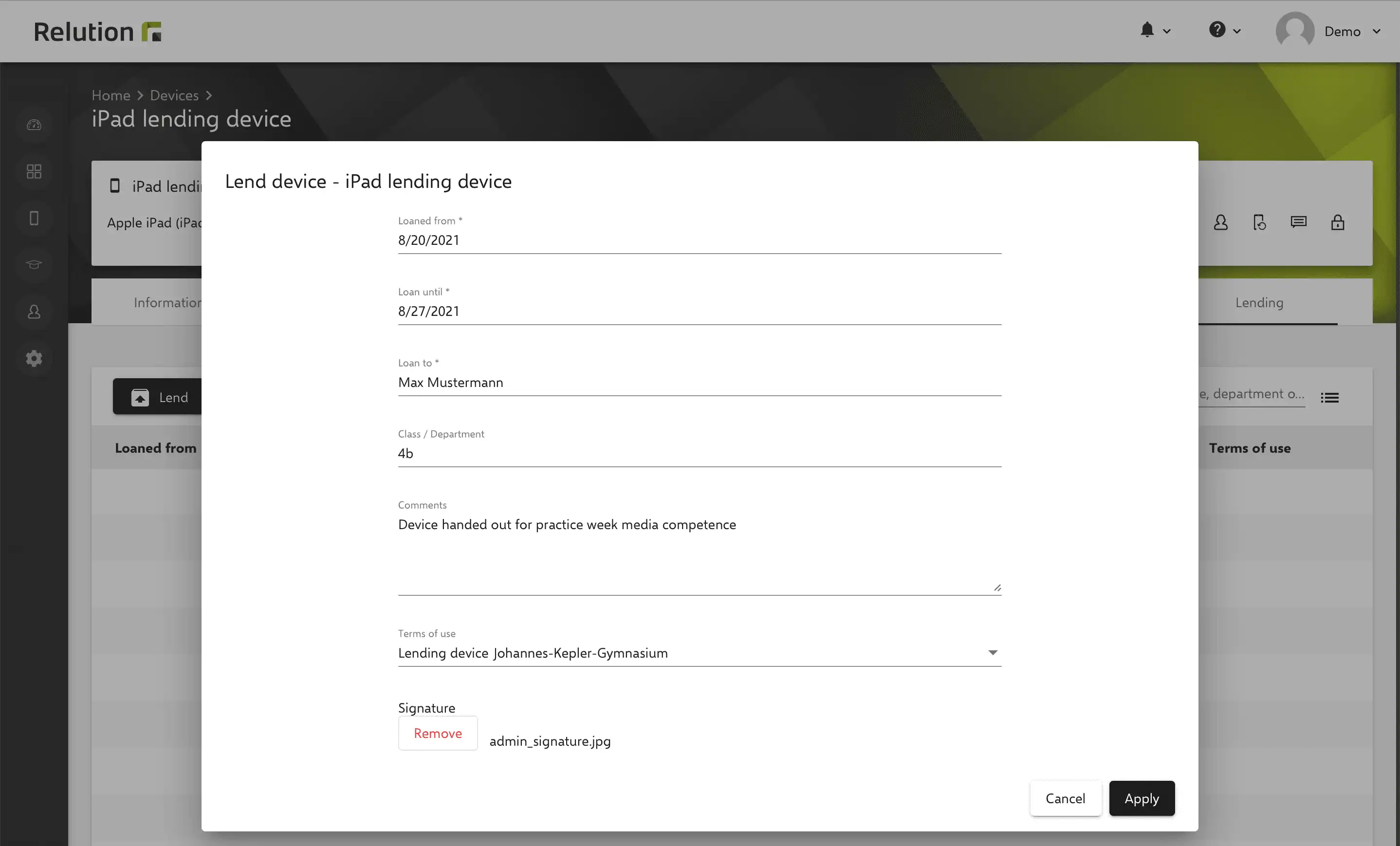
If a device is currently being lent, it is displayed in the “Lent” overview as actively lent. As long as it has not been taken back, it is not available as a ‘Lent device’ and cannot be lent.
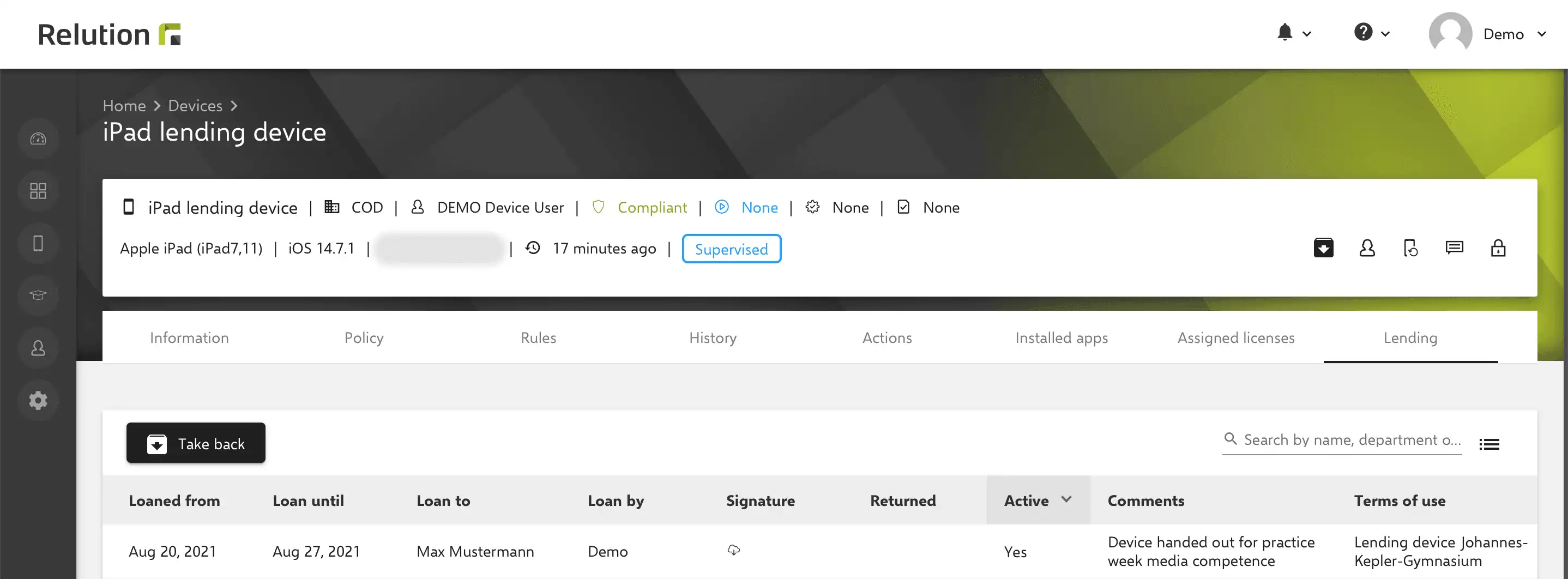
In the inventory overview, lent equipment can be recognised by the filled columns “Loan to” and “Loan until”.

3. Returning equipment
To take back a device, start the return process on the device details page via the shortcut “Take back device” in the info box or under the tab “Lending” and the button “Take back”.
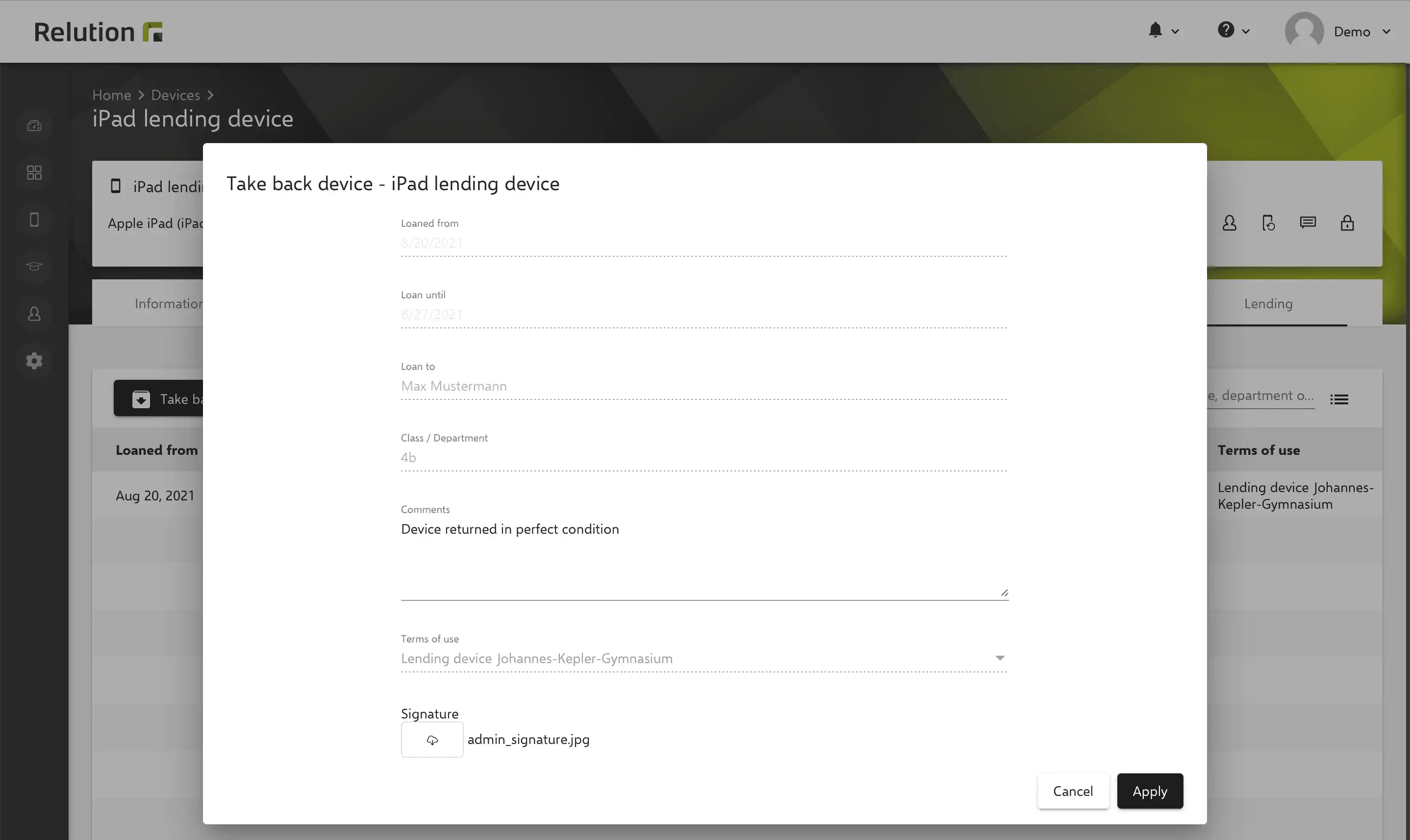
Afterwards, the device no longer appears in the “Lent” overview as an actively lent device and the date of return is displayed. The device is available again as a lent device and can now be lent again.
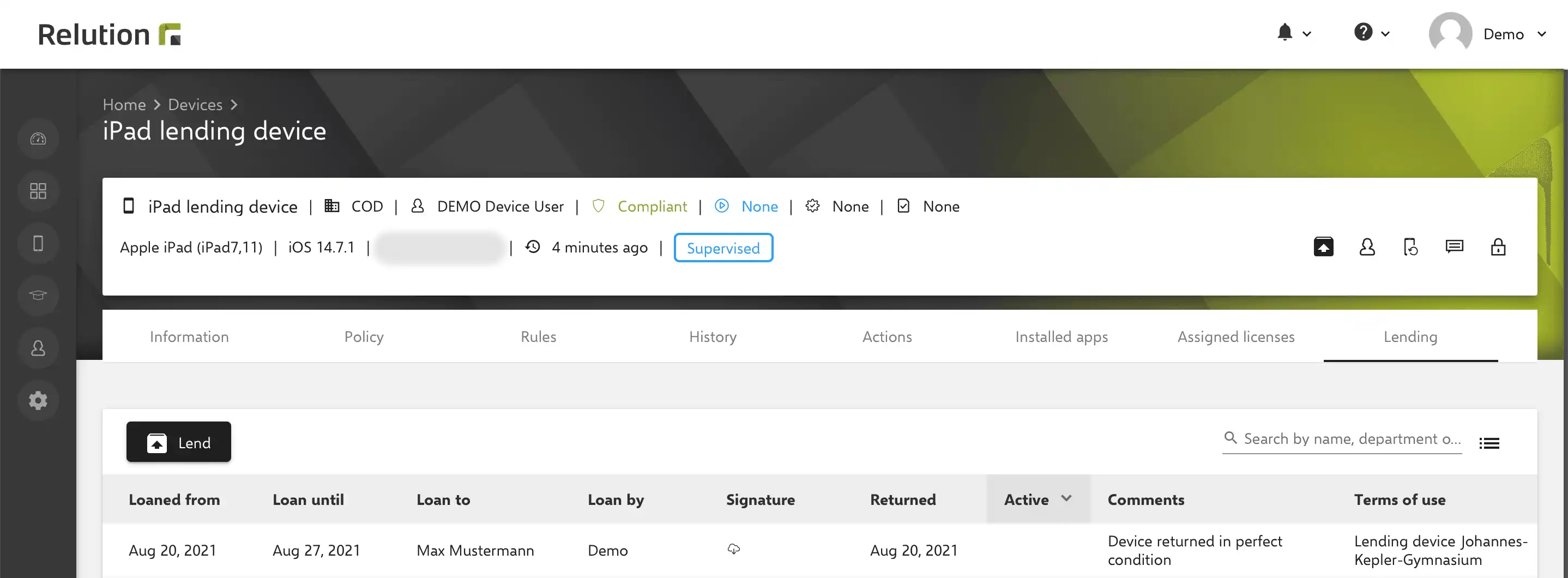
4. Exceeded lending period
If the lending period is exceeded and the device is not returned in time by the borrower, the date “Loan until” appears in red in the inventory overview for the corresponding device.

5. Rules for exceeded lending periods
In the event that the lending period is exceeded, rules can be defined on the basis of which actions are automatically carried out. For example, a lent unit that has not been returned on time with the compliance violation “lend period exceeded” can be set to the unit status “non-compliant”.
The action “Notify selected users or groups” can be used, for example, to automatically inform administrators of the incident when it occurs. This mechanism can also be used to directly block lending units or even automatically reset them to their factory settings.
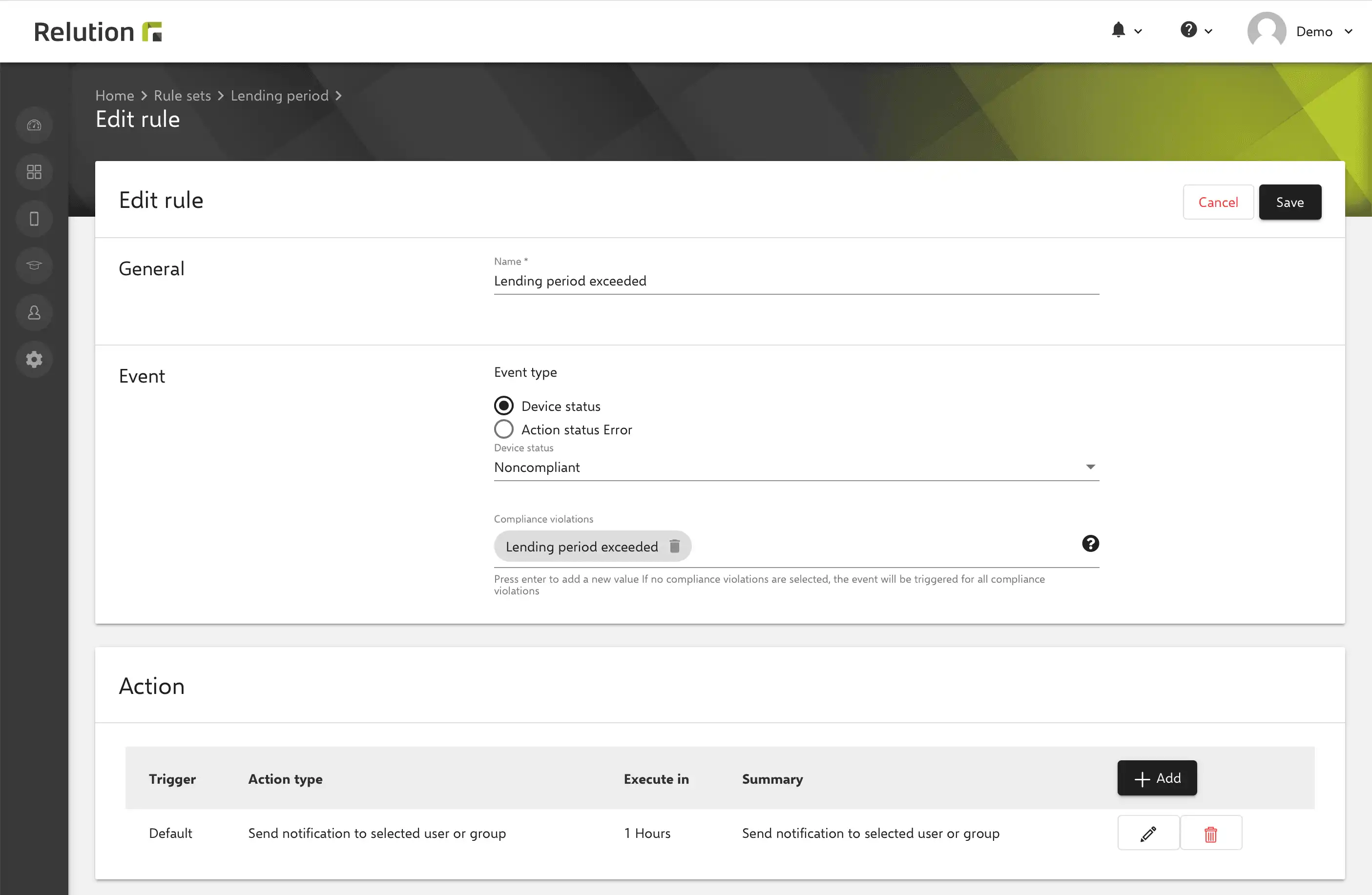
The rule is created and assigned to the corresponding lenders.


When the event occurs, the unit is automatically listed as “non-compliant” and the cause of the non-compliance can be viewed in the unit details under “Guidelines”.

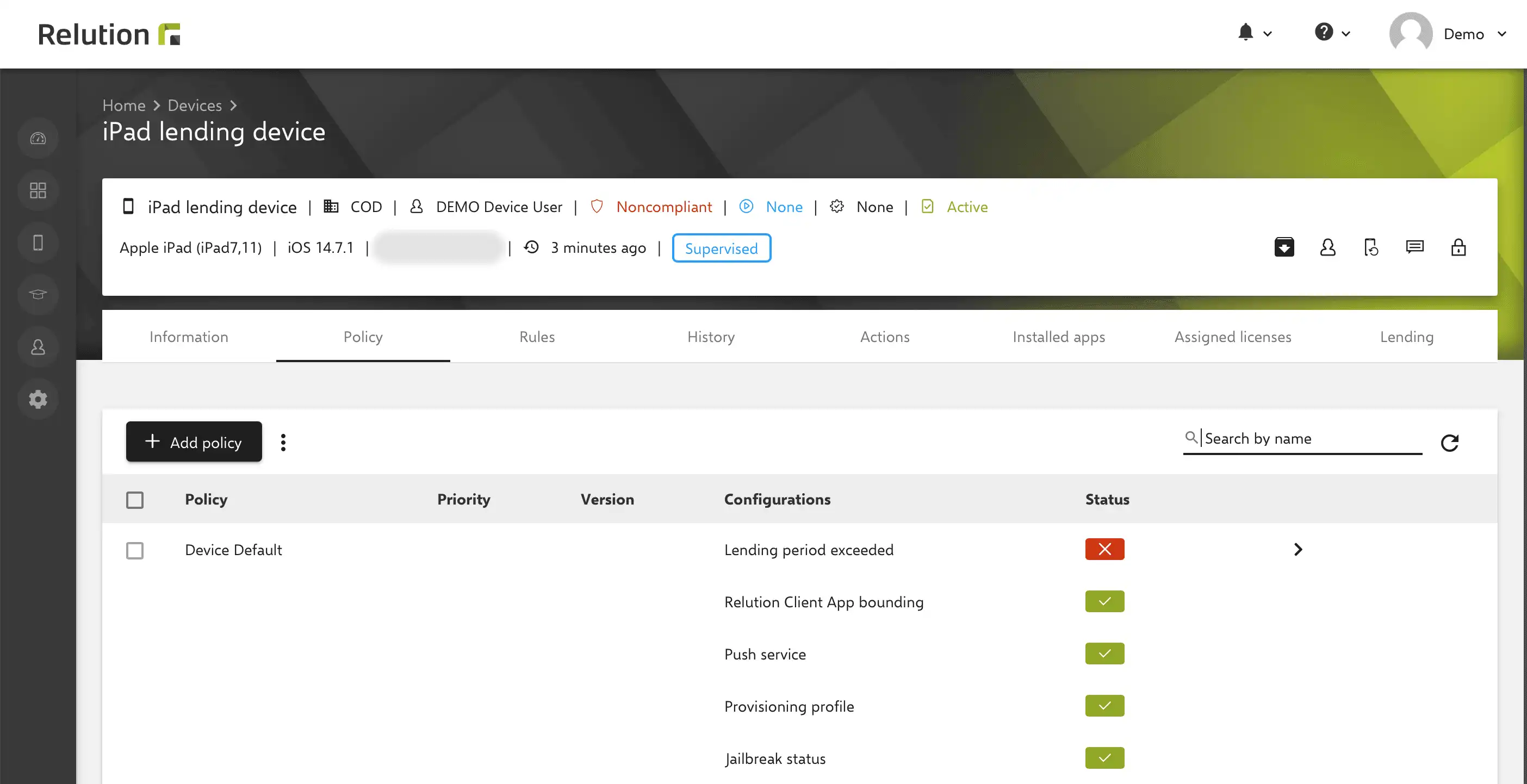
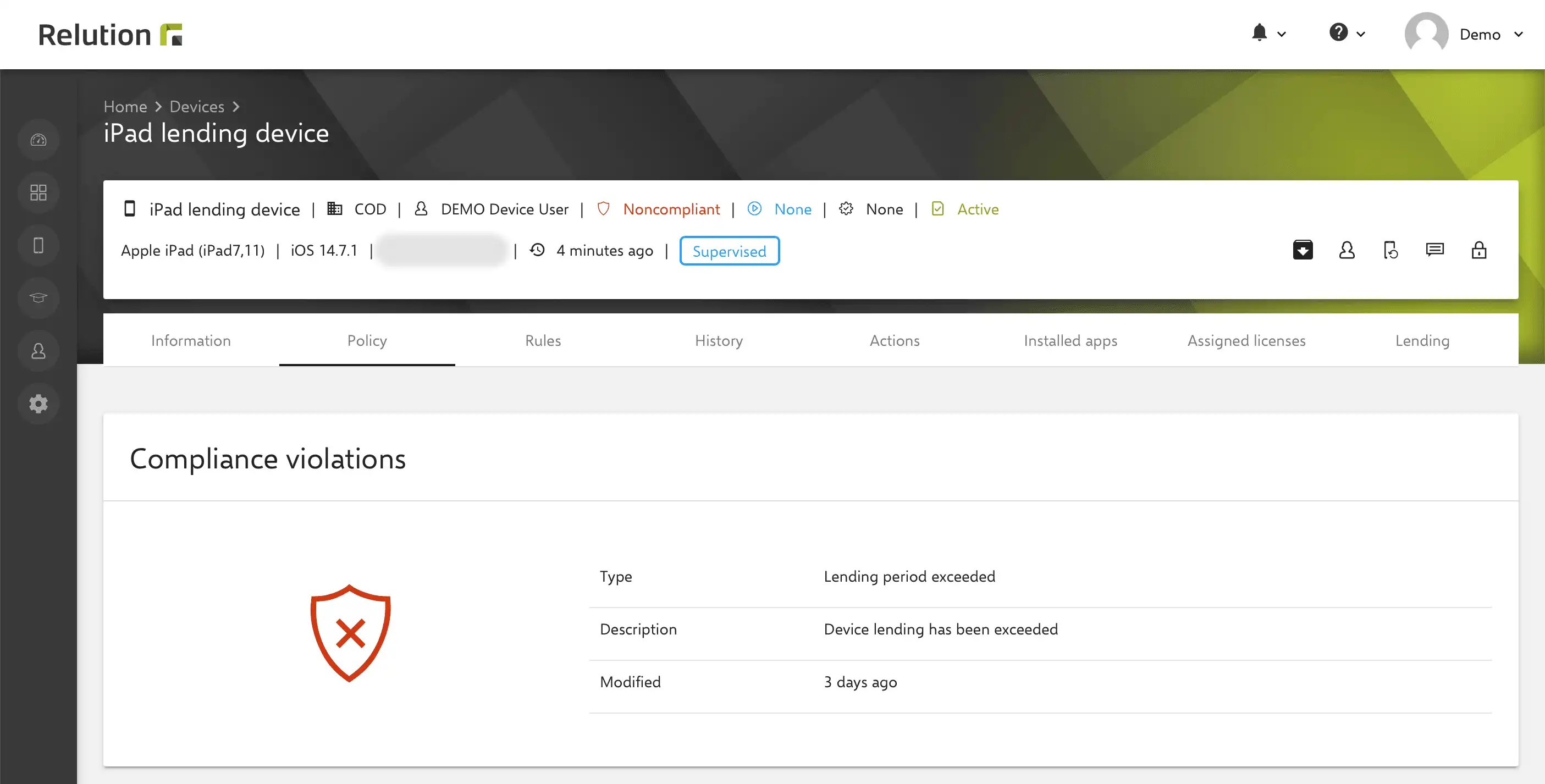
Administrators of the Relution Organisation are automatically informed about the compliance violation.
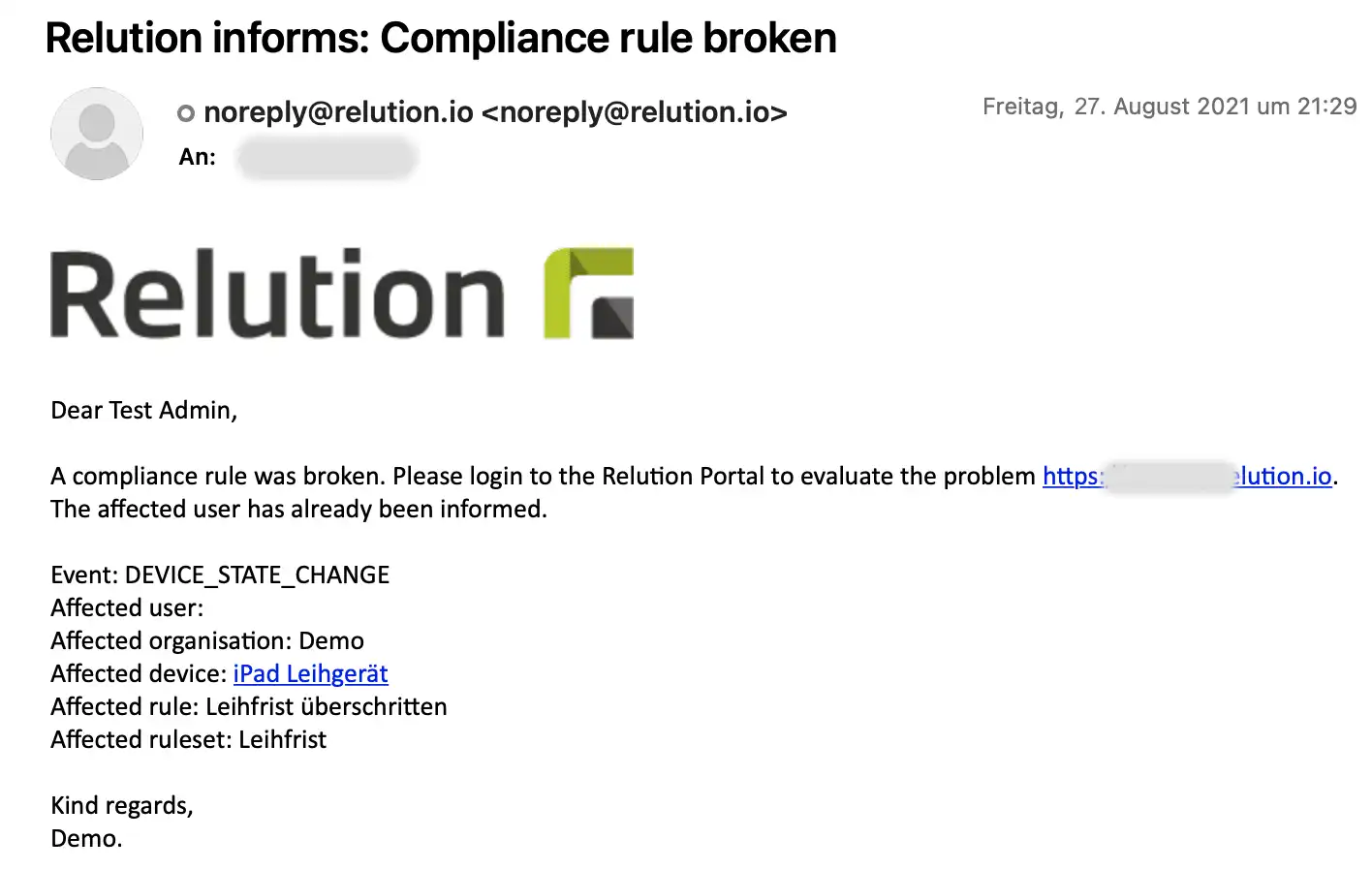
Can accessories used for a unit be documented in Relution?
Relution offers the possibility to individually define up to 5 additional properties for devices under “User-defined device properties” in the settings. For example, the property “Accessories” can be stored for all registered devices.
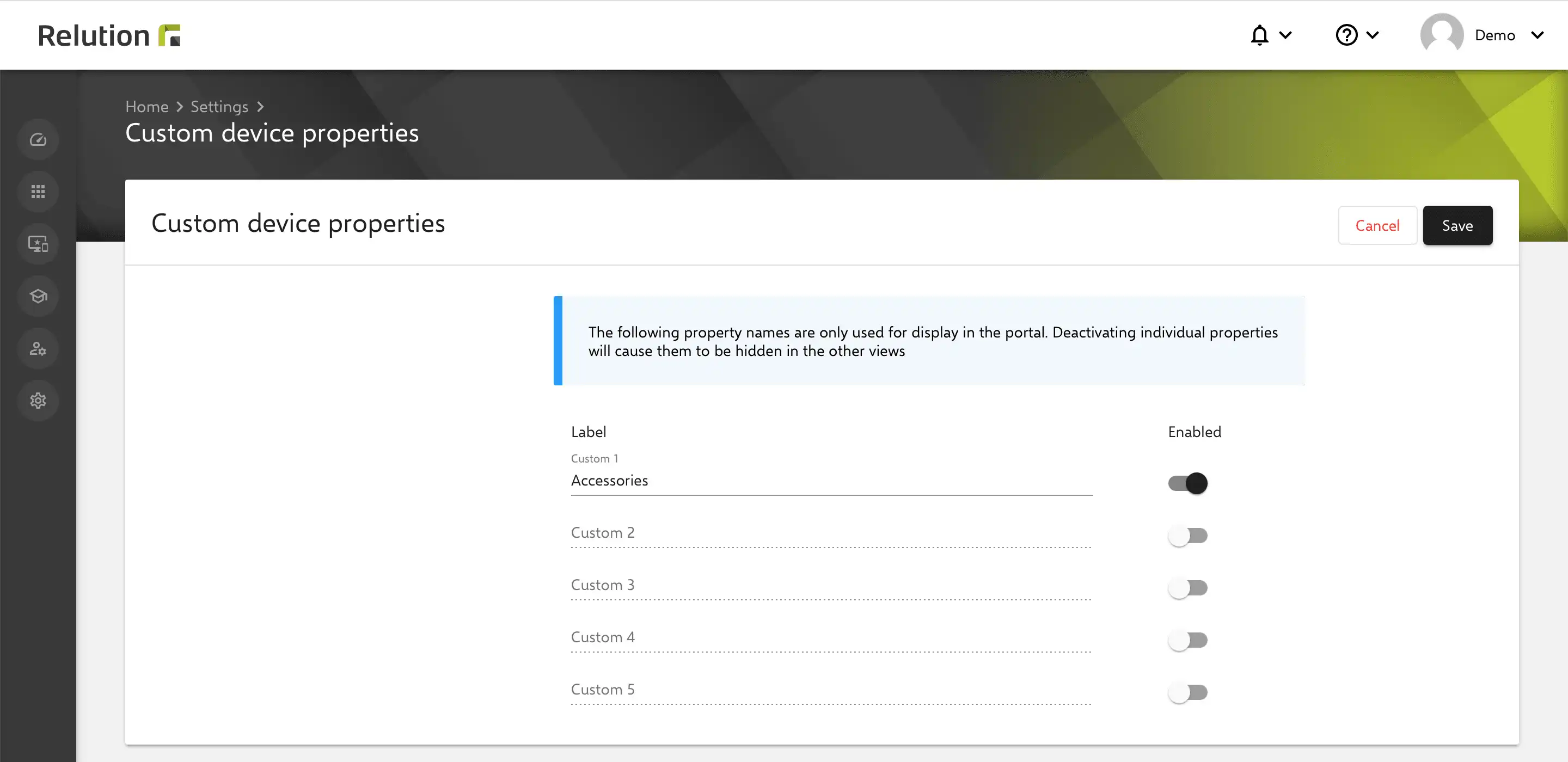
Once customised unit properties are activated, they are subsequently displayed in the unit details under “Information” at the bottom.

The corresponding values can then be entered by editing the device information. For example, the use of accessories such as power supply units, device covers or pens can be documented for each device.
All activated user-defined device properties can also be displayed as a column in the inventory overview.

It is easy to understand which accessories belong to a particular unit. When taking back a lent device, it can thus be quickly determined whether all issued items are returned together.